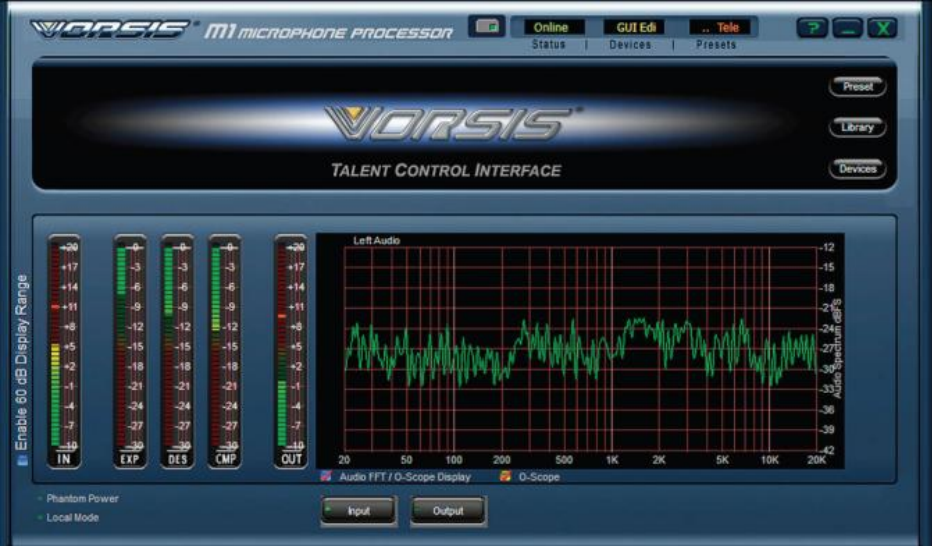The Vorsis M1 Microphone Processor

[May 2010] Choosing a microphone for studio use is only half the battle, according to John Lackness. It is equally important to have a good microphone processor. John says he has found one.
I would like to discuss my choice to make a good microphone really punch through on the air – the Vorsis M1.

The Vorsis M-1 Microphone Processor
For many years, Symtetrix 528e was almost the de facto microphone processor, used in virtually every radio station – you really would see them everywhere. But, times change, and so did I. As my choice in microphones changed, I felt like I missing out on something and researched for quite a long time for a new microphone to put in my studio.
This is where the folks at Wheatstone come into the picture. They got into the processing business a few years ago by obtaining some of the best processing engineers in the country. After speaking with them several times and trying out the processor at shows and other venues over the last year or so, I decided to at least give it a shot. So, I bit the bullet and got one.
Flexible Yet Straightforward
The Vorsis M1 is a single rack-space processor and I found it to be, as the manual describes, “a flexible and easy to use digital microphone processor offering user presets, security, networkability, an all digital DSP based framework and easy to set up parameters.”
A good place to start is by taking a look at the block diagram.
As you can see, the processor is laid out in a logical manner.

The front panel controls may look a bit confusing at first but are pretty easy to deal with once you set it to some of the default settings – which, by the way, can be also done by utilizing the included Vorsis M1 software.

So, you can either set things up manually like I did, or do it remotely via a laptop or PC. The nice thing about utilizing the included software is that you can give your air talent the ability to select presets that have been setup, but will not allow them to mess with the parameters.
Among the features of the M1 are Analog and AES I/O, phantom power, remote control and Ethernet are available via separate RJ45 connectors. A row of seven dipswitches on the back also helps select phantom power on/off as well as sample rate.

Setup of the M1 was pretty straightforward. I did the unusual thing of taking the positions shown in the photos and using this as a starting point. Not necessarily very logical, I know, but I admit curiosity got the best of me.
Luckily, I only had to adjust the expander and compressor a bit to get things where I wanted them. I am especially happy with the expander, which gave me a really clean “gate” once I quit talking. No choppiness at all, it was just smooth. And the overall sound of the processor is very, very clean.
The Voris M1 made a believer out of me, and I am glad that I chose it. I look forward to many years of great use!
– – –
Based in San Antonio, Texas, John Lackness is the Southwest representative for SCMS, Inc. If you have questions, contact John at his office at 877-390-7267 or email him at johnl@scmsinc.com
– – –
Are articles like this helpful to you? If so, you are invited to sign up for the one-time-a-week.BDR Newsletter.
It takes only 30 seconds by clicking here.
– – –
